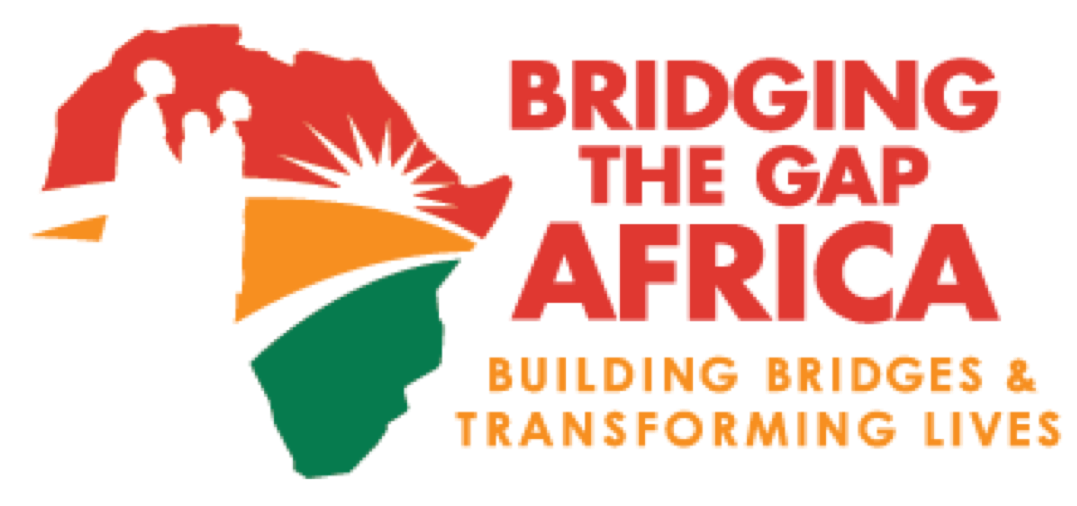Footbridges Increase Access to Markets
Several years ago Bridging the Gap Africa was surveying a site for a new bridge when a farmer from the ‘far side’ of the river shared his enthusiasm with us about the economic opportunity that the new bridge would bring. He explained how his farm was producing an excellent yield. When we congratulated him on his success he responded immediately saying his new yield was ‘not a success.' He went on to explain how he had no means of distribution for his crop which meant that his excess yield was essentially going to compost. The farmer then explained how the new bridge will provide access to a weekly market on the other side of the river that will enable him to sell his crop and increase his household income.
Bob Stofko and Danie McAren share their experience from the walks they completed to raise awareness for this week’s social impact.
•••
On August 10, 2016, four members of my family had the pleasure of completing a “river walk” in support of BE A BRIDGE and to help raise awareness for this tremendous cause. I, my wife Bev, and 2 of our children, Mike and Krista, walked to Fortino’s grocery store in Oakville, Canada, to buy some groceries, which included a crossing of the 16 Mile Creek. We picked a rather hot day as it was over 40 degrees Celsius (105 degrees Fahrenheit) with the humidity. It was a relatively short walk (2km round trip) with a steep climb out of 16 Mile Creek Valley.
Bob, Bev, and Krista Stofko crossing 16 Mile Creek
Bob in 16 Mile Creek with groceries in hand
The creek was relatively shallow, therefore the crossing was relatively safe and easy. However, there are times of the year when there is significant flow in this creek, making it dangerous to cross by foot. If this was our only way to get to the grocery store, we would certainly have to avoid high-flow conditions.
Interestingly, when we were thinking about what to buy, we decided that, since it was so hot, that we should not carry anything perishable. We had the luxury of that choice – others don’t.
Completing this walk certainly made us think about how we take something as simple as good access to a grocery store for granted. We know that there are people in places such as Kenya that risk their lives just to go to the market. Bridging the Gap Africa builds much needed footbridges in Kenya that provide this safe access.
Bob Stofko, Bridge Engineer at MMM Group
•••
I am a small-scale organic farmer and student in Guelph, Ontario, Canada. I am blessed with a strong local market for my crops, and while our market place is only 10 minutes from my home and farm (by car), I do encounter waterways that must be crossed to get there. Where the Eramosa river has gentle rocky banks it makes a wonderful place to cool off in the heat of the summer, but where the river widens nearer the city, it can have a depth above my short 5’4” stature. I chose to cross where the main footpath from my home leads towards the farmers’ market. I carried with me my friendliest hen, and a typical array of farm goods.
Danie with her friendliest Hen
Photo by Brett Forsyth Photography
Danie with produce in hand
Photo by Brett Forsyth Photography
At first step, I quickly realized I would lose sight of the bottom as my searching feet stirred the silt. My sandals squelched deep into the mud, sucking my legs down to the mid-calf. Releasing each foot from the bottom required some force, and more than once I nearly lost my balance. I continually had to quickly fumble through the large rocks and sunken trees to find footing. I was lucky that the river at this point has little current. Had I been at some of the other points on the river I explored that morning, where the water is channeled into narrower forceful falls, I surely would have lost all my goods. For hard working and generally cash strapped/food insecure farmers and their families, a loss such as this would be an absolute tragedy. My arms burned from the weight of my basket and from holding my hen above the water. There was nowhere to stop and adjust my hold, so all I could do was continue to squeeze my fingers tight and hope they wouldn’t give in or slip.
Danie's Crossing of the Eramosa River
Photo by Brett Forsyth Photography
When we were across. I sat and fed my hen beet greens for her good behavior, and contemplated if I would have the will to continue farming if this was my daily/weekly reality. I would in reality need far more than one basket, so what does one do? Build a raft? Make several crossings a day? It has been a hard enough farming season in Ontario this year with the drought. Additionally, facing this crossing might have me thinking strongly about other employment. Not crossing would mean more than no income; it would also mean no chance to buy what foods I couldn’t provide for my family from the farm. As a woman, and mother, like the majority of us small farmers are across the globe, I would likely have my young children in tow making this a distressing trip each time.
If you are able, please join us and BE A BRIDGE. Providing farmers with safe and convenient market access not only supports local and sustainable food sources, it ensures the continued livelihood of rural communities and villages. I believe that building bridges is an imperative part of making this happen.
Danie McAren, Market Gardener





